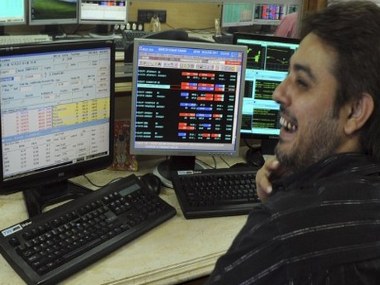The current relief rally may have something to do with the Nifty looking oversold, but the rebound is unlikely to last long. That is what Laurence Balanco, Asian technical research at CLSA, thinks.
He has history on his side. Historically, August and September are the worst months for the index, which can bring the Nifty down to 4,400 level, he adds.
[caption id=“attachment_73837” align=“alignleft” width=“380” caption=“Historically, August and September are the worst months for the index. AFP”]  [/caption]
The Nifty bounced back to a high of 5021.55 on Tuesday before closing at 5003. The 50-stock index touched a low of 4718 on Friday, but has since recovered strongly.
Market watchers put this uptick to two factors. First, the speech by Fed chairman Ben Bernanke was not as bearish as expected. Furthermore, with Bernanke pushing the ball forward to September 20 when a meeting is expected to discuss measures to revive the economy, markets are expected to remain range bound and volatile during this interim phase.
The two days of market recovery saw the market opening well above the previous days’ high (gap opening) and then, trending slowly upwards without any meaningful corrections. This is a sign of short covering as speculators rushed to cover their short-sell position ahead of a shortened week and no expectation of any major negative news flows. In addition, the stocks that recovered most were in real estate, IT and metals sectors, the ones which had fallen the most and had seen a high build-up in short-sell position. Short covering in these stocks led to a sharp movement in them.
Importantly though, the market has moved higher over the last two days, the put call ratio (PCR) has also gone up, indicating higher ‘put options’ being bought than ‘call options’. The put call ratio is a popular sentiment indicator based on the trading volumes of put options compared to call options. The ratio attempts to gauge the prevailing level of bullishness or bearishness in the market. High PCR indicates a more bearish perception of the market as more put options have been bought over call options. PCR rose from 1.28 on Friday to 1.34.
Lower GDP numbers announced on Tuesday have added to the fundamental weakness in the market. The only positive takeaway from these numbers is that the central bank might stay away from raising interest rates.


)
)
)
)
)
)
)
)
)



